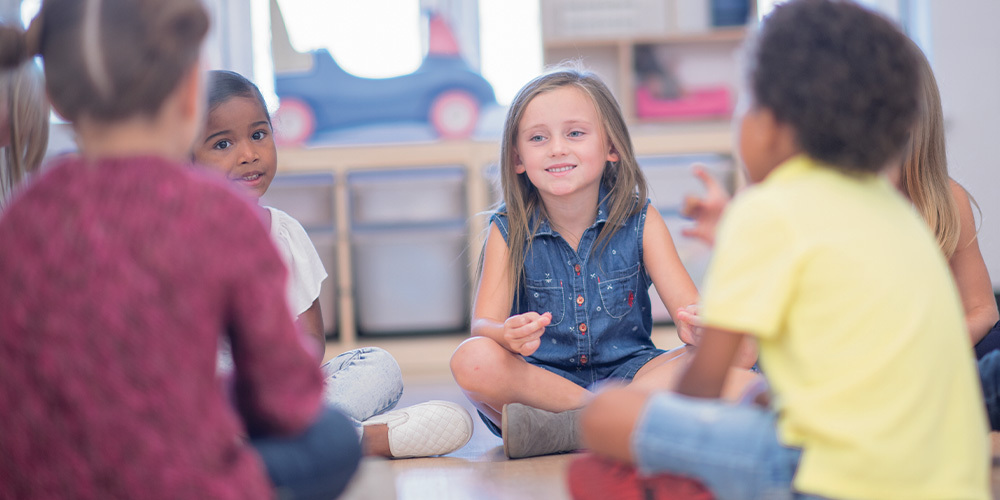“When I was a boy and I would see scary things in the news,” Mr. Rogers once told his preschool audience, “my mother would say to me, ‘Look for the helpers. You will always find people who are helping.’”
Mr. Rogers’ words still hold true today. Though the headlines are full of violence, natural and man-made disasters, and other tragedies, every trauma is accompanied by stories of helpers. Doctors go into disease-infested areas, boaters rescue people from floods, and ordinary people run into burning buildings and forests to save others. It’s often up to teachers to help students interpret and cope with the difficult news of the day, and become the “helpers” others can count on.
In this article, we’ll explore how different age groups react to traumatic events and practical strategies for helping them become resilient in the face of tragedy.
How Different Age Groups React to Traumatic Events
Everyone reacts differently to trauma. If teachers aren’t familiar with all the signs, they might misunderstand why students are acting out and be unable to offer the appropriate supports. The National Institute for Mental Health has broken down common reactions for each age group.
Preschool Children (Age 5 and Under)
Preschool children might:
- Cling to parents or caregivers.
- Cry and be tearful.
- Have tantrums and be irritable.
- Complain of physical problems such as stomach aches or headaches.
- Suddenly return to behaviors such as bed-wetting and thumb-sucking.
- Show increased fearfulness (e.g., of the dark, monsters, or being alone).
- Incorporate aspects of the traumatic event into imaginary play.
Elementary School Students (Ages 6–11)
Elementary school students might:
- Have problems in school.
- Isolate themselves from family and friends.
- Have nightmares, refuse to go to bed, or experience other sleep problems.
- Become irritable, angry, or disruptive.
- Be unable to concentrate.
- Complain of physical problems such as stomachaches and headaches.
- Develop unfounded fears.
- Lose interest in fun activities.
Adolescents (Ages 12–17)
Adolescents might:
- Have nightmares or other sleep problems.
- Avoid reminders of the event.
- Use or abuse drugs, alcohol, or tobacco.
- Be disruptive or disrespectful or behave destructively.
- Complain of physical problems such as stomachaches and headaches.
- Become isolated from friends and family.
- Be angry or resentful.
- Lose interest in fun activities.
Creating Trauma-Sensitive Schools and Coping Mechanisms
There’s no one-size-fits-all solution for trauma. One student might move on from a difficult event without missing a beat, another might respond well to interventions right away, and yet another might seem impervious to any attempts to help. Regardless, it’s important that teachers work to make their classrooms safe spaces and provide help when the bad headlines hit close to home.
Here are some techniques you can use in your classroom to help your students cope with traumatic situations:
- A Calm Corner: Sometimes used for misbehavior or conflict, a calm corner gives students a space to identify their feelings and choose a calming strategy they can work through before rejoining the rest of the class. This technique is designed for elementary school children, but can be adapted for older students as well.
- The Cognitive Behavioral Intervention for Trauma in Schools (CBITS) Program: This is a training program and collection of resources intended for teachers to use when students experience community or school violence, accidents and injuries, physical abuse and domestic violence, and natural and man-made disasters. This resource is geared toward 5th- to 12th-grade students.
- Normalize and Acknowledge Feelings: Trauma can often give rise to feelings of deep anger and resentment. It’s important to reassure students that these feelings are normal and valid, and furthermore help them to express their anger in a healthy way. Lynne Namka, Ed.D., came up with a list of cues to help teachers coach their students through angry feelings.
- Writing: Penning an essay or even writing down a simple thought can help students process their feelings in a healthy way. Teachers can prepare any number of prompts that help students come to terms with their natural emotions.






